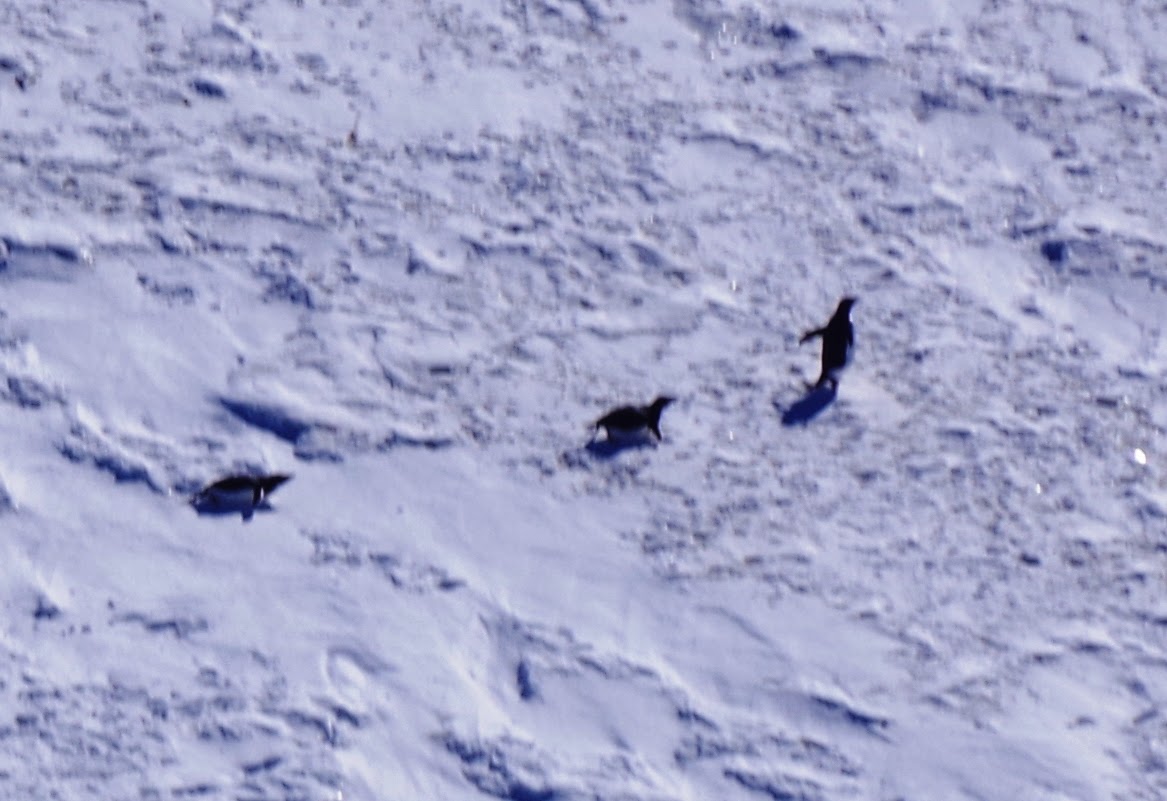 |
| Picture 1: View of our transport to the Pegasus Airfield. |
I completed all of the lab activities I needed to in advance
of my return trip just in the nick of time. I now have approximately 150
suspended sediments filtered, dried, weighed and packed for transport back to
the US. The sediment samples are required to be shipped separately back to the
US due to soil permitting issues and it will likely take anywhere from six to
eight weeks to get the samples back to my lab. Once the samples arrive, I will
work with Villanova undergraduate students to learn more about the chemistry,
mineralogy, and relative age of the sediments.
 |
| Picture 5: View of our flight landing on the Pegasus airfield ice runway. |
 |
Picture 3: Transition to the night sky on our return flight
home.
|
One of my highlights of this past week was having the
opportunity to talk with students of Villanova’s Environmental Science II
course. A live conference call was organized where the students were able to
ask questions regarding how McMurdo and field camps obtains their energy, waste
disposal practices in Antarctica (this explains the delay for the past two
posts), what my research entails and/or what it’s like to conduct research
under challenging conditions. The call lasted approximately one hour and I was
really impressed with the forethought put into their questions.
 |
Picture 4: View of all the cold weather gear of our flight's
occupants.
|
 |
| Picture 5: Christchurch Botanical Gardens |
About an hour and half into the flight the sky began to darken rather noticeably. Given we took off a little after midnight, I realized this would be the first time I would see the night sky in about six weeks as we made our way north of the Antarctic Circle. It was amazing watching this transition to dark and finally seeing the moon and stars illuminate the night sky (Picture 3). Once we landed we had to clear customs and then return all of our warm weather gear (Picture 4). Needless to say we were all pretty tired as it was now 9am. After saying goodbyes, we all went on our own ways.
 |
| Picture 6: View of the Christchurch Cathedral. |
I have decided to spend a couple of days in the warmth of New Zealand before heading back to the states. My hotel is close the botanical gardens in Christchurch and the smells of plant life were quite overwhelming at first after being surrounded by snow and ice for so long (Picture 5).
One last thing worth mentioning is the lasting impact the 2011 Christchurch earthquake has had on this town. I was last here in 2003 and the downtown area is almost unrecognizable. The M6.3 earthquake was followed by a sizable 360+ aftershocks; all of which had an incredibly damaging effect on the city’s buildings and infrastructure (over 80% of the city’s water and sewer lines were compromised). The earthquake was so damaging given its close proximity to the city center, its relatively shallow epicenter and the fact that much of the city is underlain by river silt given its location in a flood plain. This abundant silt can liquefy during an earthquake and cause extreme damage to foundations. While it was good to see so much new construction underway, I was quite surprised to see so many multi-story office/apartment buildings vacant and waiting to be torn down (Picture 6). On the plus side, some artists have made the most of the changing architecture to paint a rather timely and poignant wall mural (Picture 7).
 |
| Picture 7: Climate change focused mural in Christchurch. |




































